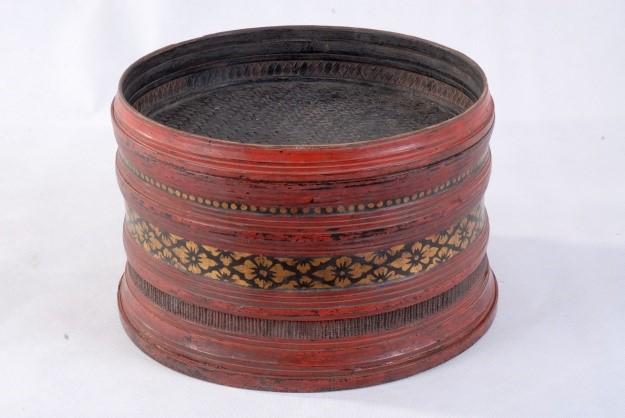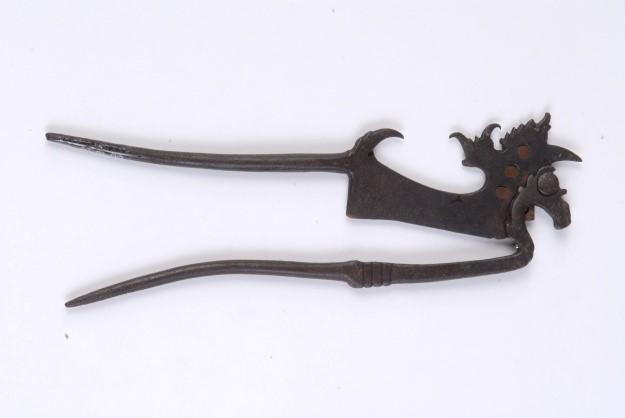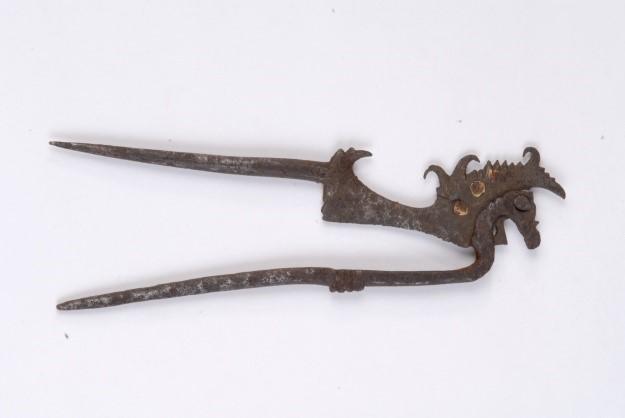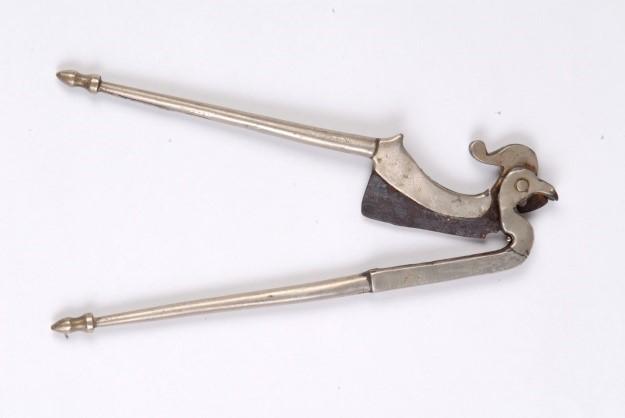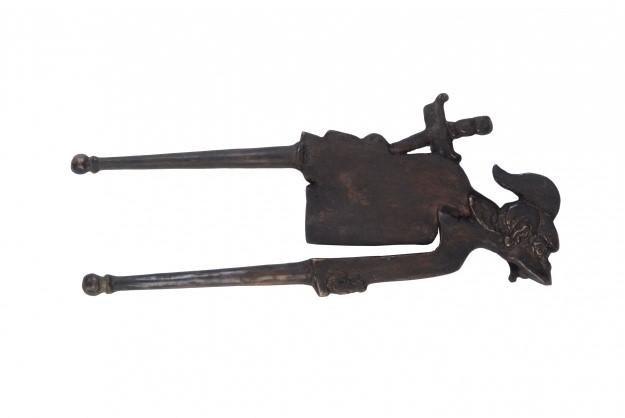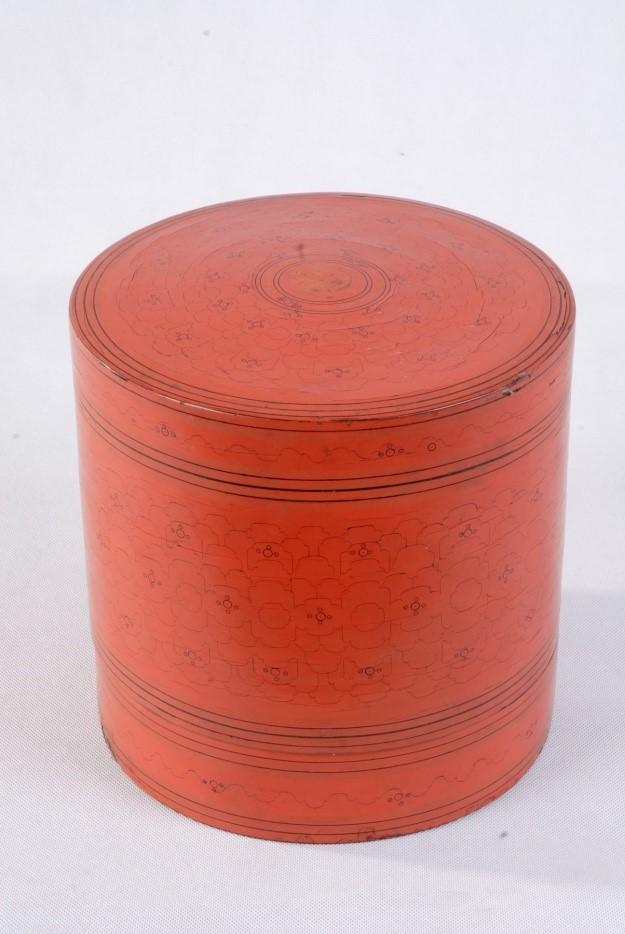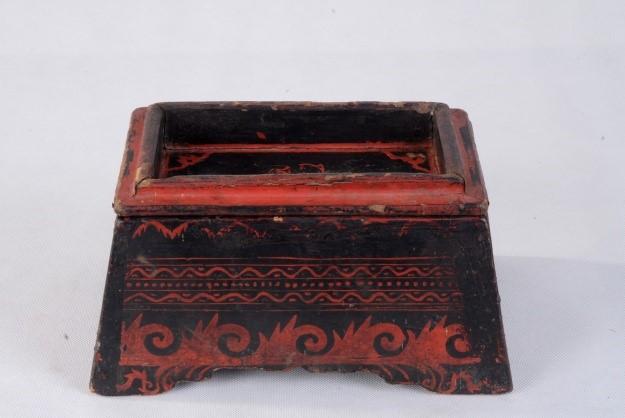

The practice of betel chewing is prevalent throughout Southeast Asia. A betel quid consists of the betel leaf, areca nut and lime paste made from slaked limestone, coral or shells. Other ingredients such as tobacco fibers, cinnamon bark, turmeric, cloves are added depending on local custom. The betel leaf is daubed with lime paste; then folded around a quarter of areca nut.
The betel set includes a betel cutter, a lime pot, and a betel box or tray. Some people use boxes and trays made of copper or silver, comprising smaller boxes for different ingredients. Sophisticated cutters appear in the shapes of horses, roosters or birds. In Cambodia, the lime pots are often bird-shaped while they are made in the shape of Buddhism stupa in Thailand. The elderly often use a small mortar to crush the areca nuts.
Traditionally, betel and areca are used to receive guests, at weddings, funerals and many other rituals. They are also used as medicine. Although the tradition is rarely used today, this custom still remains an important feature of Southeast Asian cultures.
